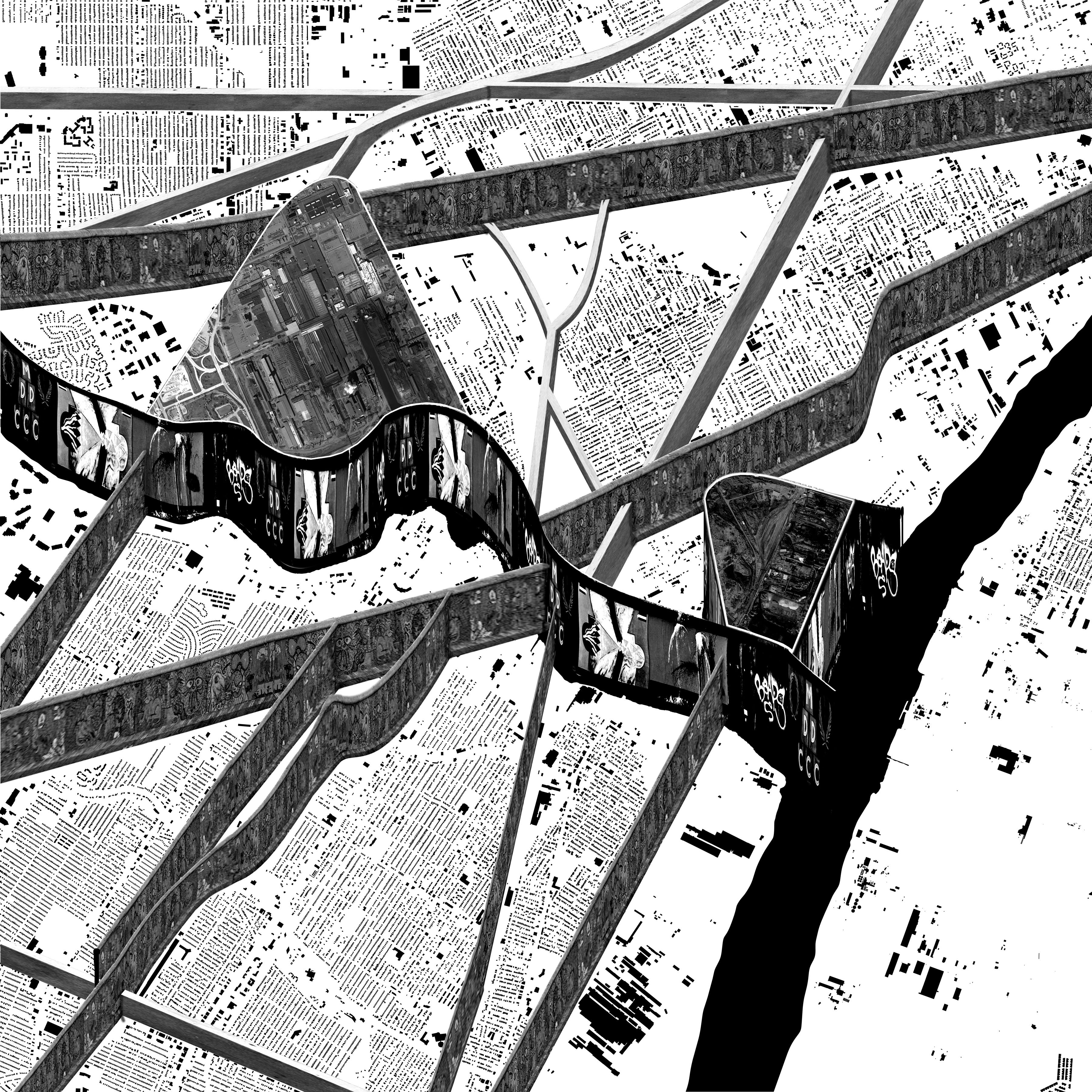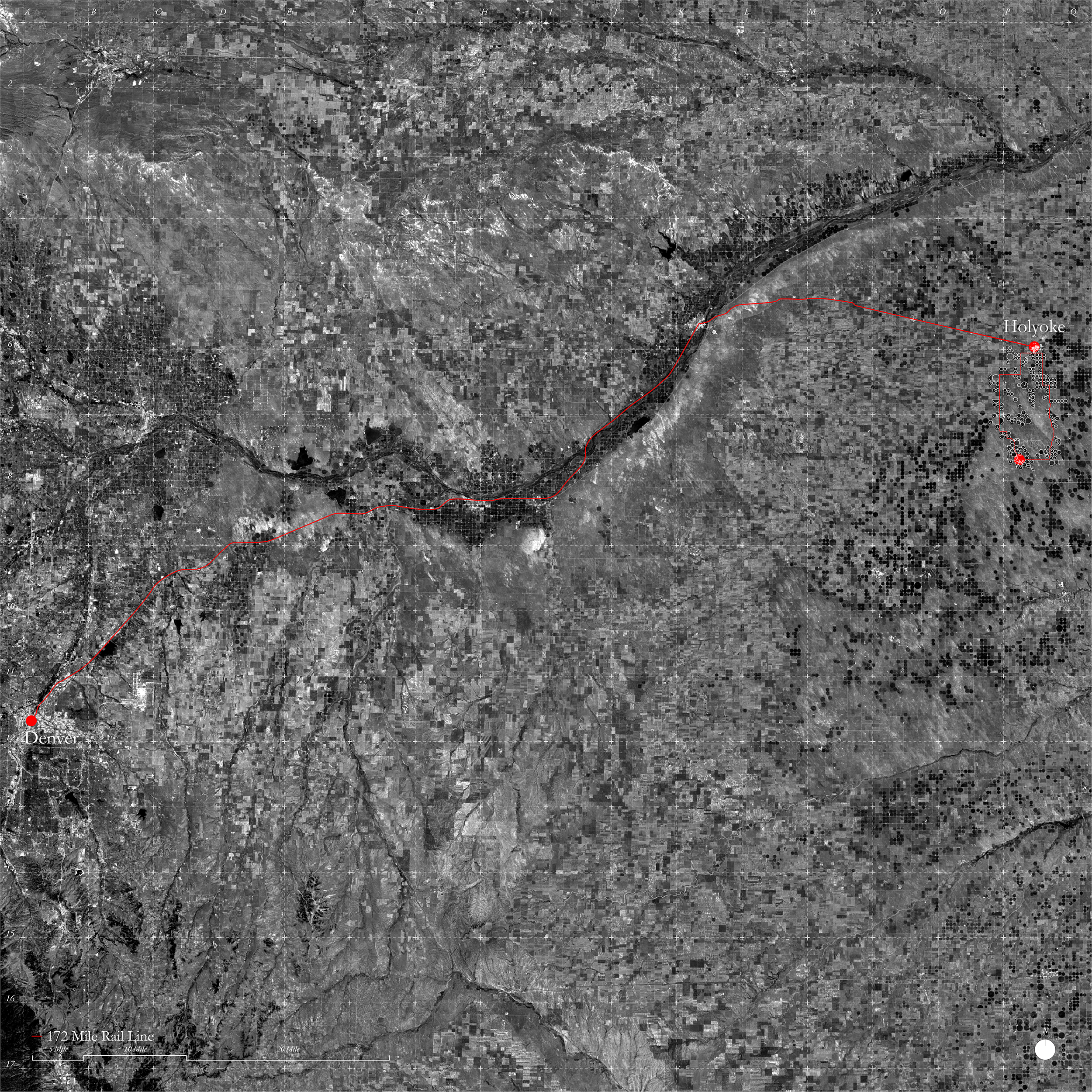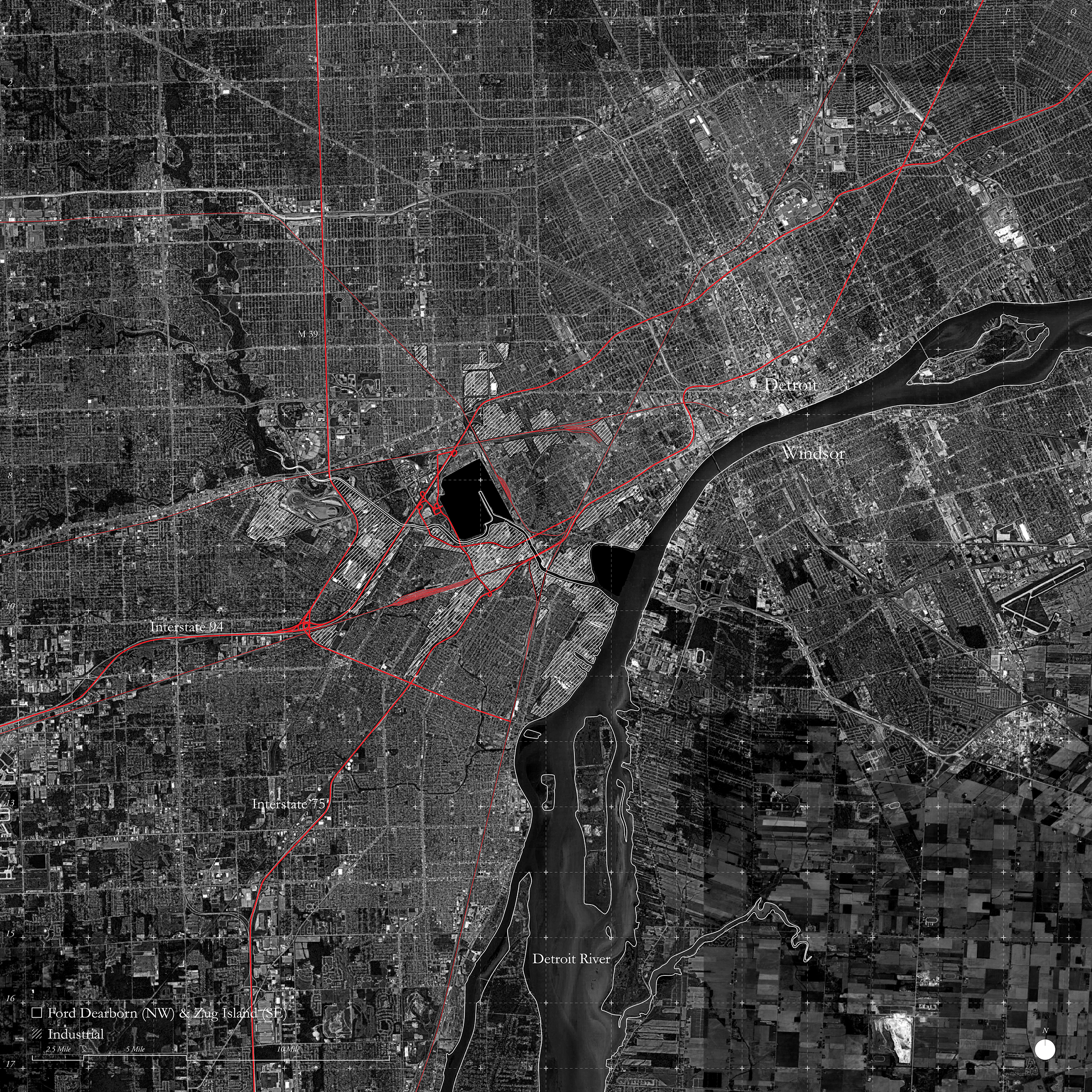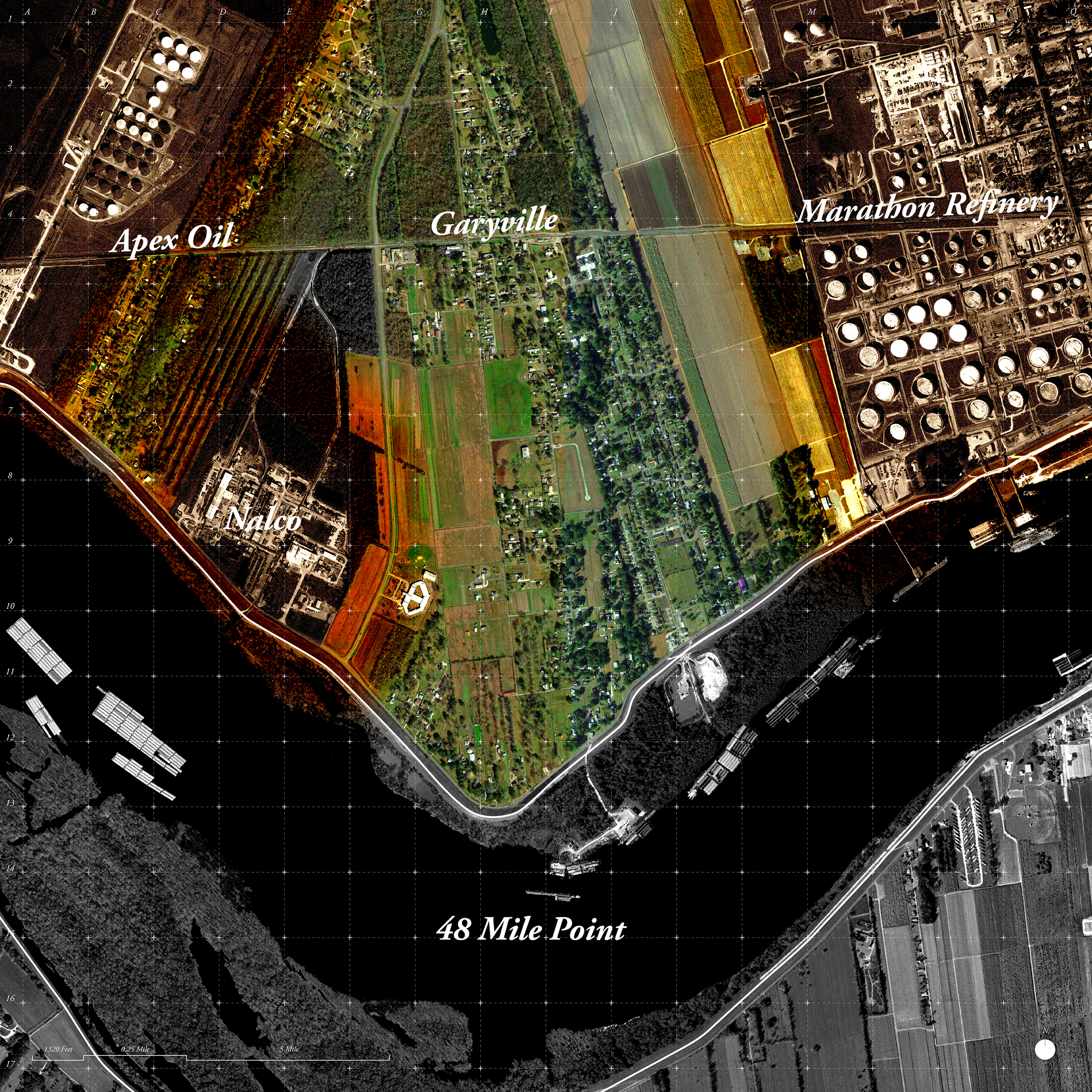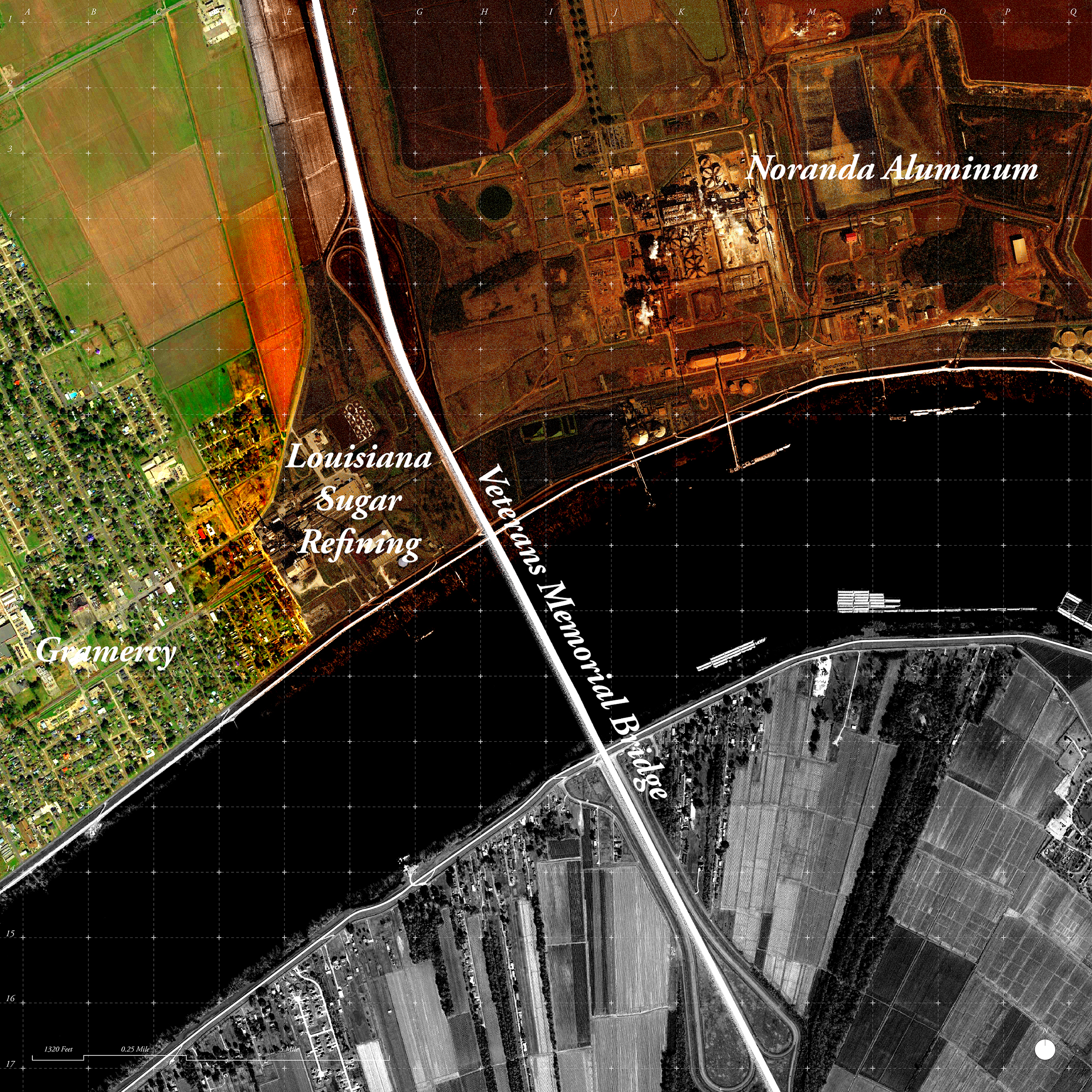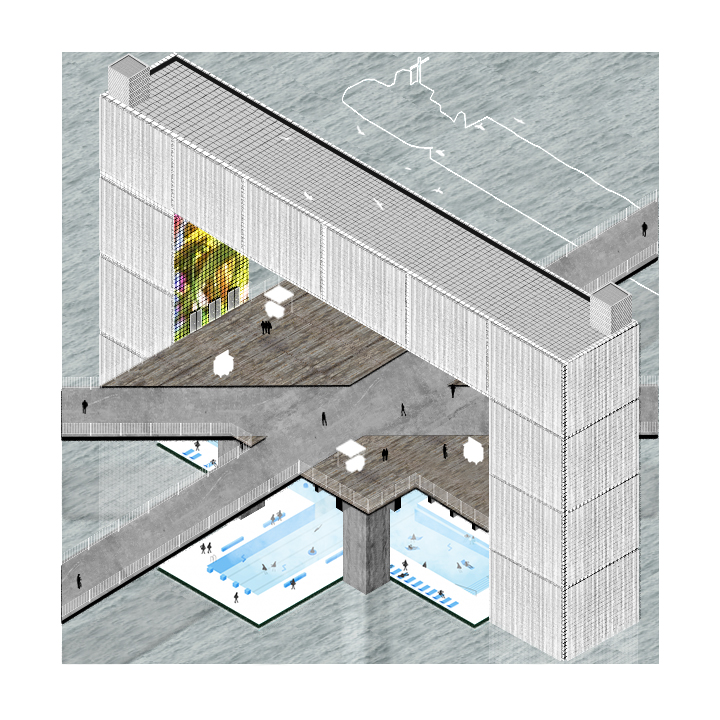Territory
The study of land focused around a frustration of inequal development and privelege yieleded a design direction focused on the possibiity to unravel an architecture of capitalism from within, citing the model presented by the Operaists as written about in Pier Vittorio Aureli’s The Project of Autonomy.
A majority of effort for territory was devoted to resolving this frustration through theoretical arguments, of which ranged between philosophy, economics, geography, architecture and history.
Through this mutidisciplinary study, Territory emerged as a theoretical topic addressed by many as the means by which much of the worlds power dynamics manifest in physical form. By understanding territory one can begin to synthesize an understanding of how capitalism, particularly in its most recent form, connects to the creation of architecture.
With 3 case-studies, the project tested this idea that understanding territory leads to a greater synthesis of understanding. The 3 studies were of connections between countryside and city, specifically looking at the dejection of the built environment and poor quality of life of the countryside at the benefit of the city. The final product of the study was a rhetorical design proposal for the Mississippi river, at the junction of several private property lines and the river itself. The proposal would attempt to improve quality of life, while also being a productive capitalist artifact. In effect, this would create a mutually beneficial architecture for the people and the market. However, what became salient in the proposal, was the inability for an architecture to be mutually beneficial for the people and the market, which is an apotheosis rather than a conclusion.
The project developed thoughts that that led to a greater project, Hyper-Junk.
The study of land focused around a frustration of inequal development and privelege yieleded a design direction focused on the possibiity to unravel an architecture of capitalism from within, citing the model presented by the Operaists as written about in Pier Vittorio Aureli’s The Project of Autonomy.
A majority of effort for territory was devoted to resolving this frustration through theoretical arguments, of which ranged between philosophy, economics, geography, architecture and history.
Through this mutidisciplinary study, Territory emerged as a theoretical topic addressed by many as the means by which much of the worlds power dynamics manifest in physical form. By understanding territory one can begin to synthesize an understanding of how capitalism, particularly in its most recent form, connects to the creation of architecture.
With 3 case-studies, the project tested this idea that understanding territory leads to a greater synthesis of understanding. The 3 studies were of connections between countryside and city, specifically looking at the dejection of the built environment and poor quality of life of the countryside at the benefit of the city. The final product of the study was a rhetorical design proposal for the Mississippi river, at the junction of several private property lines and the river itself. The proposal would attempt to improve quality of life, while also being a productive capitalist artifact. In effect, this would create a mutually beneficial architecture for the people and the market. However, what became salient in the proposal, was the inability for an architecture to be mutually beneficial for the people and the market, which is an apotheosis rather than a conclusion.
The project developed thoughts that that led to a greater project, Hyper-Junk.
Refresh page if images do not load
